The Gait analysis is the study of human locomotion, using the eye and the brain of observers, augmented by instrumentation for measuring body movements, body mechanics, and the activity of the muscles. Gait analysis is used to assess, plan, and treat individuals with conditions affecting their ability to walk. It is also commonly used in sports to help athletes run more efficiently and to identify posture-related or movement-related problems in people with injuries.
By acquiring the fundamental parameters of their patient’s gait, OPTOGAIT allows physical therapists, doctors, and researchers to quantitatively measure underlying mechanical inefficiencies and target any problematic areas. With this information, they can develop the right exercises to properly address the patient’s specific needs.
The Gait Report provided with the OptoGait software
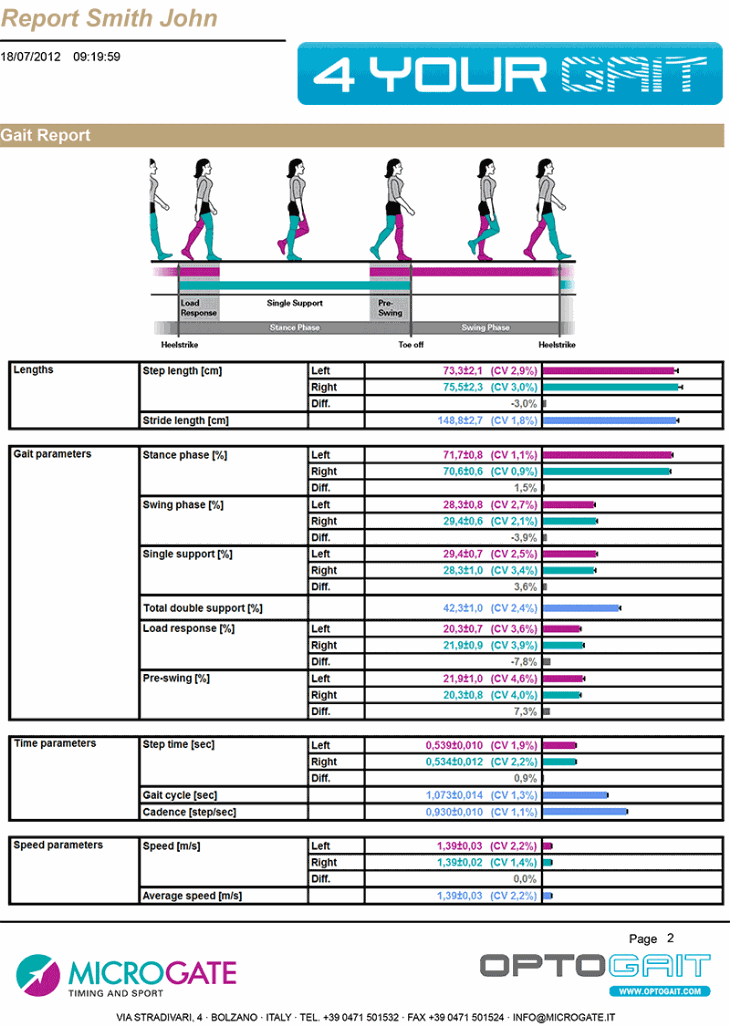
Definitions
In this figure we see the main features of "gait cycle" and explain the key terms used in Gait Analysis that you'll find in the OptoGait software.
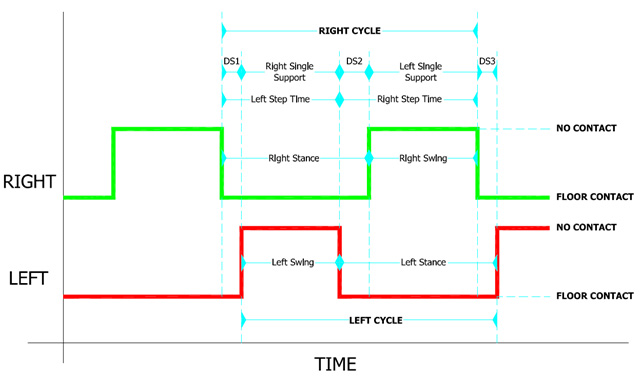
Fig. 1
The Gait Cycle begins when the heel of one foot touches the ground and ends when the same foot, after having executed one step, is set down. The cycle begins with the Stance phase (the heel-to-toe contact sequence of the foot) and continues with a Swing phase, where the foot is suspended and proceeds in the air (on average the stance phase accounts for 60% and the swing phase for 40%).
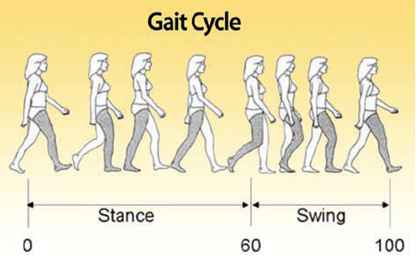
Each gait cycle consists of two phases, where both feet are in contact with the ground, called Double Support. The first Double Support (DS1 in Figure 1 refers to the right foot) is also called ‘Load Response’, whereas the second (DS2) is called ‘Pre Swing’). When only one foot is in contact with the ground, this is called Single Support.
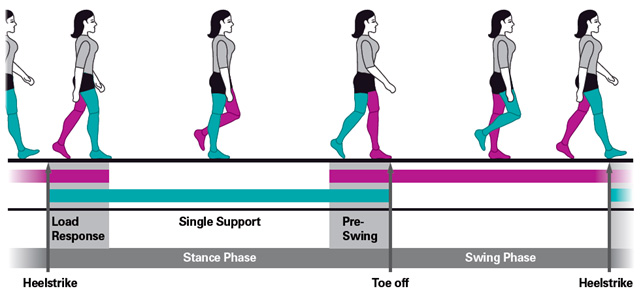
The Step is the distance between the tip (toe) of two subsequent feet or the distance between the heel of two subsequent feet (in the software you can choose how to calculate setting the parameter ‘Step length calculation’).

The Stride is the distance between the tip of two subsequent footprints of the same foot or the distance between the heel of two subsequent footprints of the same foot (always depending of the "Step lenght calculation" parameter).

The Speed is the relation between the distance between the two feet and the sum of the first Contact time (Tc) and the Flight time (Tf).

The Acceleration is calculated as the relation between speed delta of the two steps and the sum of the contact and flight time.
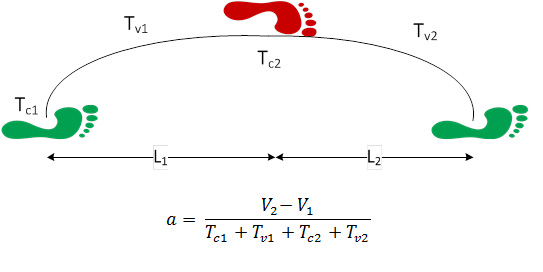
The Stride Angle is the angle of the parable tangent deriving from the movement of a stride (L=stride length, h=height to which the foot is risen).
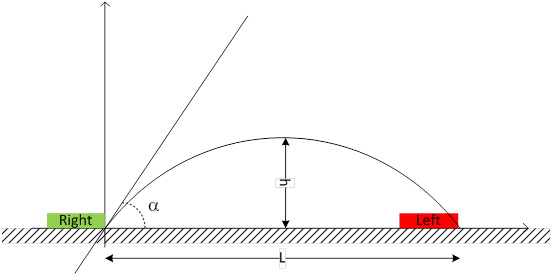
Back To Applications
Setting up Your optogait


